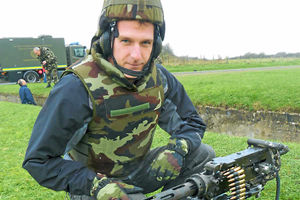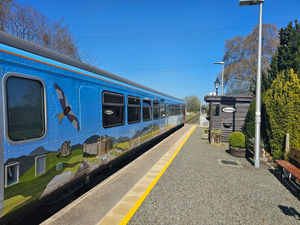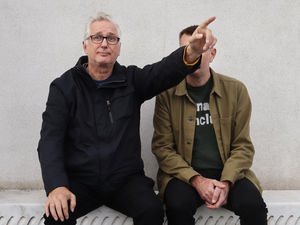Dig WW2 with Dan Snow - TV review
Engineers looked on in astonishment as they retrieved a Spitfire engine that had been buried in a Northern Irish peat bog for 70 years. The Rolls Royce engine was beautifully preserved, so much so that fuel began to leak from it as it was excavated from acid soil.

It had flown its final mission under the pilotship of Bud Wolfe, an American airman who bailed from the aircraft minutes after taking off. Its story was told last night by historian Dan Snow in the first of a new three-part series called Dig WW2.
Snow is one of our finest presenters. He is personable, intelligent and articulate. He has the same confident air of his father Peter, the BBC journalist, and much calmer than Peter's cousin, Jon, the Channel 4 news reporter.
Though his double first-class honours degree in Modern History from Oxford University's Balliol College makes his one of TV's great intellects, he eschews over-intellectualising his subjects.
He tells stories simply, without ornation, letting the facts speak for themselves.
Last night's engrossing programme told the story of Northern Ireland's role in the Second World War. Snow did so by focusing on the individuals who participated in events.
His artfully retelling of Wolfe's story was joyous. Snow watched on as aviation archaeologists located the site in Donegal of a Wolfe's fallen Spitfire and was thrilled when a heavy digger brought it to the surface. Snow held Wolfe's flying cap with genuine excitement, making a personal connection with the former airman.
In other sections, he shone the spotlight on the role played by Harland and Wolff in developing the Churchill tank, one of the most famous pieces of machinery used in the Second World War. He explained how it enabled men to serve with great gallantry before tracking down an enthusiast who owns the only working Churchill tank of its kind.
The beauty of Snow's programme, however, was the stories about men, rather than machines.
There were interviews with former servicemen, including a delightful sequence in which a former tank gunner talked about their own personal battles. Naturally, Snow got to play in the tank, being taken for a ride in the Churchill, driving through a tree-lined grove as his senses came under attack from the noise and sheer physicality of the tank.
There were other elements to enjoy. Snow revealed the story of a pilot who became the most successful U-boat hunter of all time and also took a trip to Italy to tell the story of the Hitler line. The seemingly impregnable line was heavily fortified by steel, concrete and machine gun nests. The line came under fire from the North Irish Horse, a yeomanry unit of the British Territorial Army that had been raised in Northern Ireland.
One veteran soldier told how members of the North Irish Horse were 'dead scared' when they went into a battle in which visibility was no more than 10 yards.
The tanks, however, offered support, blasting high explosive shells at Nazi fighters.
Remarkably, the North Irish horse broke through minefields, barbed wire and enemy snipers to snap the Hitler Line.
The story was one of many captivating tales told with loving regard by Snow in his affectionately filmed homage to the brave Northern Irish soldiers who fought so valiantly during World War II.
Andy Richardson





